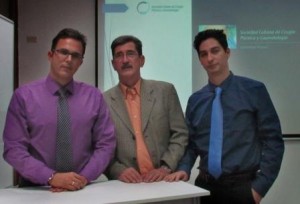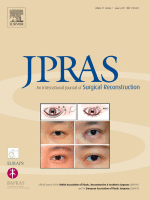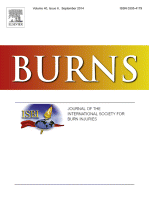 La Habana, 31 de enero de 2017 – II Aniversario de Cirugía Plástica y Caumatología. Con motivo del segundo aniversario del sitio Cirugía Plástica y Caumatología, el pasado 31 de enero, se realizó una actividad conmemorativa y sesión especial de la Junta de Gobierno de nuestra sociedad. Ampliar…
La Habana, 31 de enero de 2017 – II Aniversario de Cirugía Plástica y Caumatología. Con motivo del segundo aniversario del sitio Cirugía Plástica y Caumatología, el pasado 31 de enero, se realizó una actividad conmemorativa y sesión especial de la Junta de Gobierno de nuestra sociedad. Ampliar…
Publicado: . En: Noticias de la Sociedad. ![]()
 Resection of facial skin tumors aims to remove the tumors completely and make the surgical scar unnoticeable as much as possible. By improving the purse string suture method, we developed a new pentagram suture technique that enables simple and safe suturing of small to large defects with early satisfactory esthetic outcomes. The surgical outcomes of a case series were examined in this report.
Resection of facial skin tumors aims to remove the tumors completely and make the surgical scar unnoticeable as much as possible. By improving the purse string suture method, we developed a new pentagram suture technique that enables simple and safe suturing of small to large defects with early satisfactory esthetic outcomes. The surgical outcomes of a case series were examined in this report. The majority of studies assessing the rupture rate of breast implants were performed by the breast implant manufacturing industry with questionable independence. After repetitive removals of ruptured implants from the same model, our team decided to assess the rupture rate and the estimated risk thereof for most of the silicone gel–filled implants we have used since they regained market approval in France in 2001.
The majority of studies assessing the rupture rate of breast implants were performed by the breast implant manufacturing industry with questionable independence. After repetitive removals of ruptured implants from the same model, our team decided to assess the rupture rate and the estimated risk thereof for most of the silicone gel–filled implants we have used since they regained market approval in France in 2001. For more than 40 years, silver sulphadiazine 1% (SSD) is considered as standard therapy for the conservative treatment of burn wounds. However, in the last 10 years, substantial disadvantages of SSD have been reported in the literature and probably as a result of this, several new dressings for burn wounds have been developed and put on the market. The objective of this systematic review is to evaluate the available evidence on SSD in the conservative treatment of burns, specifically in comparison with the newer burn dressings that are increasingly being used nowadays.
For more than 40 years, silver sulphadiazine 1% (SSD) is considered as standard therapy for the conservative treatment of burn wounds. However, in the last 10 years, substantial disadvantages of SSD have been reported in the literature and probably as a result of this, several new dressings for burn wounds have been developed and put on the market. The objective of this systematic review is to evaluate the available evidence on SSD in the conservative treatment of burns, specifically in comparison with the newer burn dressings that are increasingly being used nowadays.




 Sitio web publicado el
Sitio web publicado el
Los lectores comentan